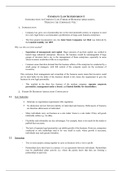Summary
Summary Introduction and piercing the corporate veil
- Module
- Company Law
- Institution
- Cambridge University (CAM)
An introduction to corporate law including an in-depth description of the case law concerning the lifting and piercing of the corporate veil.
[Show more]




